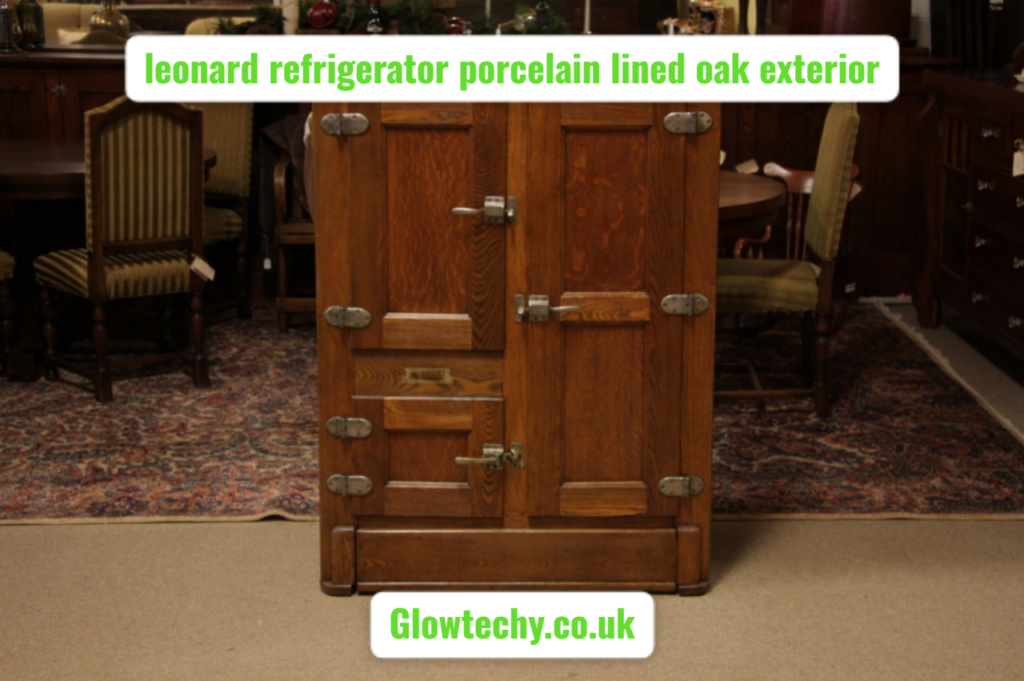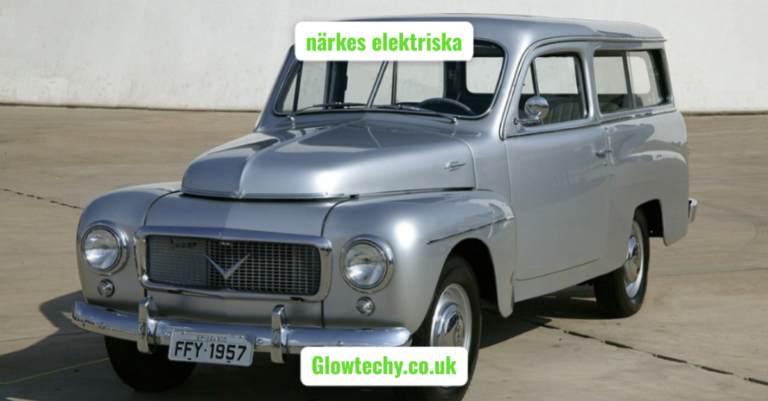
Introduction: Rediscovering a Forgotten Marvel
In today’s world of stainless steel, smart displays, and automated temperature control, the idea of a refrigerator lined with porcelain and encased in oak seems almost mythical. Yet, the “leonard refrigerator porcelain lined oak exterior” stands as a remarkable artifact from the late 19th and early 20th centuries—a time when craftsmanship, utility, and elegance coexisted in harmony. This antique marvel not only served as a functional cooling solution but also as a statement of sophistication and innovation. In this article, we dive into the history, construction, uniqueness, and modern-day significance of the Leonard refrigerator with a porcelain interior and oak exterior. Whether you’re a collector, a history enthusiast, or just someone fascinated by vintage appliances, this guide offers everything you need to know about this engineering gem.
The Origins of the Leonard Refrigerator
A Brief History of Leonard’s Legacy
The Leonard brand was established by Charles H. Leonard in the late 1800s in Grand Rapids, Michigan. Initially a furniture maker, leonard refrigerator porcelain lined oak exterior eventually pivoted to making iceboxes, a precursor to modern refrigerators. His designs incorporated superior materials like porcelain and oak, which were both practical and visually appealing. These iceboxes, including the porcelain-lined oak exterior versions, quickly gained popularity for their durability and aesthetics, making them a mainstay in upper-class homes across America.

Construction and Materials
Why Oak and Porcelain Were Revolutionary
The Leonard refrigerator’s construction was a clever fusion of style and science. The oak exterior not only provided a rich, timeless look but also added to the structural integrity of the unit. Oak is naturally resistant to moisture and pests, making it an ideal material for furniture and, in this case, refrigeration units. Inside, the use of porcelain lining served two crucial functions: hygiene and insulation. Porcelain is non-porous, easy to clean, and prevents odor retention, ensuring that the food stored within stayed fresh for longer.
Functionality in the Pre-Electric Era
Cooling Without Electricity
Before the widespread adoption of electric refrigeration, people relied on blocks of ice to cool their perishables. The Leonard refrigerator featured separate compartments for ice and food, often with strategically placed vents and metal fittings to direct the cold air efficiently throughout the unit. This design was instrumental in maximizing the lifespan of both the ice and the stored goods. Users would typically replace the ice every few days, depending on the ambient temperature and usage frequency.
Iconic Design Elements
A Blend of Beauty and Function
One of the most compelling aspects of the Leonard refrigerator porcelain lined oak exterior is its design. The oak exteriors were usually stained in rich tones and finished with intricate carvings or paneling, often resembling high-end furniture rather than kitchen appliances. Brass or nickel-plated hardware, ornate handles, and visible joinery elevated the unit’s appearance. These design elements made Leonard refrigerators a centerpiece of early 20th-century kitchens.
Market Value and Collectibility
What Makes It So Coveted Today?
Today, these antique refrigerators are highly sought after by collectors and vintage appliance enthusiasts. A well-preserved Leonard porcelain lined oak refrigerator can fetch anywhere from $1,000 to $5,000 depending on its condition, size, and authenticity. Restored versions often find homes in boutique hotels, themed restaurants, and private collections. Their rarity and craftsmanship make them stand out in an era of mass-produced, disposable appliances.
Restoration: A Labor of Love
Challenges and Rewards of Reviving a Classic
Restoring a leonard refrigerator porcelain lined oak exterior is no small feat. It often involves replacing or repairing the porcelain lining, refinishing the oak exterior, and ensuring that the hardware remains functional and historically accurate. Yet, those who undertake this task are rewarded with a stunning piece of functional history. Whether used as a storage cabinet, wine cooler, or simply a decorative item, a restored Leonard refrigerator becomes a conversation starter.
Comparison Table: Leonard Refrigerator vs. Modern Units
| Feature | Leonard Refrigerator | Modern Refrigerator |
| Cooling Mechanism | Ice block | Compressor-based |
| Exterior Material | Oak wood | Stainless steel or plastic |
| Interior Material | Porcelain | Plastic or stainless steel |
| Energy Source | Manual (non-electric) | Electric |
| Aesthetic Appeal | Antique, ornate | Minimalist, contemporary |
Environmental Perspective
Sustainability Before It Was Trendy
Leonard refrigerators were built to last for decades, if not centuries. Unlike today’s throwaway culture, these units exemplify sustainability through durability and repairability. The use of natural materials like oak and porcelain further minimized their environmental impact. In a way, they represent an early form of eco-conscious design long before the term became popular.
The Social Status Symbol
Refrigeration as a Marker of Wealth
During their peak, owning a Leonard refrigerator was a status symbol. Not every household could afford one, and those who could often showcased it as a centerpiece in their kitchens or pantries. This association with wealth and refinement added another layer of desirability to these refrigerators, one that still lingers in the minds of collectors and design enthusiasts.
Unique Features Worth Highlighting
Built-In Drip Trays and Adjustable Shelves
Unlike many iceboxes of the era, Leonard refrigerators came with built-in drip trays to collect melted ice, preventing water damage to the wooden structure. Some models also offered adjustable wire or wooden shelves, allowing for more customized storage solutions. These forward-thinking features added functional value and differentiated Leonard models from their competitors.
Preservation Tips for Owners
Caring for Your Antique Treasure
If you’re lucky enough to own a Leonard refrigerator, proper maintenance is key. Keep the oak exterior conditioned with suitable wood oils or waxes. Avoid using harsh chemicals on the porcelain interior—mild soap and warm water suffice. Always check the hinges and seals for signs of wear and replace them with historically accurate replicas when necessary.
How to Identify an Authentic Leonard Refrigerator
Key Markings and Details
Original Leonard refrigerators often feature brass or embossed metal nameplates, serial numbers, and distinctive hardware. The craftsmanship of the joinery, the quality of the porcelain lining, and the precision of the fittings all point to authenticity. Knowing these markers helps prevent investment in poorly restored or imitation pieces.

Popular Use Cases Today
Beyond Just Food Storage
In modern settings, these refrigerators have found new life in unique ways. Some use them as wine cellars, others as stylish pantries or bar cabinets. Boutique hotels and restaurants often showcase them in lobbies or dining areas as functional decor. The adaptability of Leonard refrigerators makes them both timeless and versatile.
Investment Potential
Why Collectors Are Betting on Them
As antique furniture and appliances become more popular, the value of rare, well-preserved Leonard refrigerators is only expected to rise. Their scarcity, combined with their historical and aesthetic value, positions them as excellent long-term investments. Whether restored or in original condition, these units are likely to appreciate in both monetary and cultural value.
The Future of Antique Refrigeration Collectibles
Trends in Restoration and Repurposing
The growing interest in sustainable living and vintage aesthetics has rekindled appreciation for appliances like the Leonard refrigerator. Restoration communities, DIY enthusiasts, and antique marketplaces have all contributed to this revival. With more awareness and better access to restoration resources, we may see a new era where such items become everyday luxury collectibles.
Conclusion: Why the Leonard Refrigerator Still Matters
The leonard refrigerator porcelain lined oak exterior is more than just a relic of a bygone era—it’s a masterpiece of innovation, design, and sustainable living. From its luxurious materials to its practical design, it serves as a reminder of a time when utility and beauty were never mutually exclusive. For those who value history, craftsmanship, and timeless appeal, the Leonard refrigerator remains a prized possession worth every bit of admiration it garners.
Bullet Points Summary
- Leonard refrigerators were made with oak exteriors and porcelain interiors.
- These antique units were used before the invention of electric refrigeration.
- Highly valued for craftsmanship, aesthetic appeal, and functionality.
- Can be used today as storage, wine cabinets, or decorative furniture.
- Authentic pieces have identifying nameplates and quality joinery.
FAQs
1. How can I tell if my Leonard refrigerator is authentic?
Check for nameplates, serial numbers, high-quality porcelain interiors, and sturdy oak exteriors with visible craftsmanship and original fittings.
2. Is it possible to use a Leonard refrigerator for modern refrigeration?
While not electric, some users repurpose them with hidden cooling units or use them as stylish pantries or wine coolers.
3. What is the average cost of a restored Leonard refrigerator?
Depending on the condition and authenticity, prices range between $1,000 and $5,000 or more.
Also Read This: FTD Shipping Company Near Warner NH: A Comprehensive Guide




